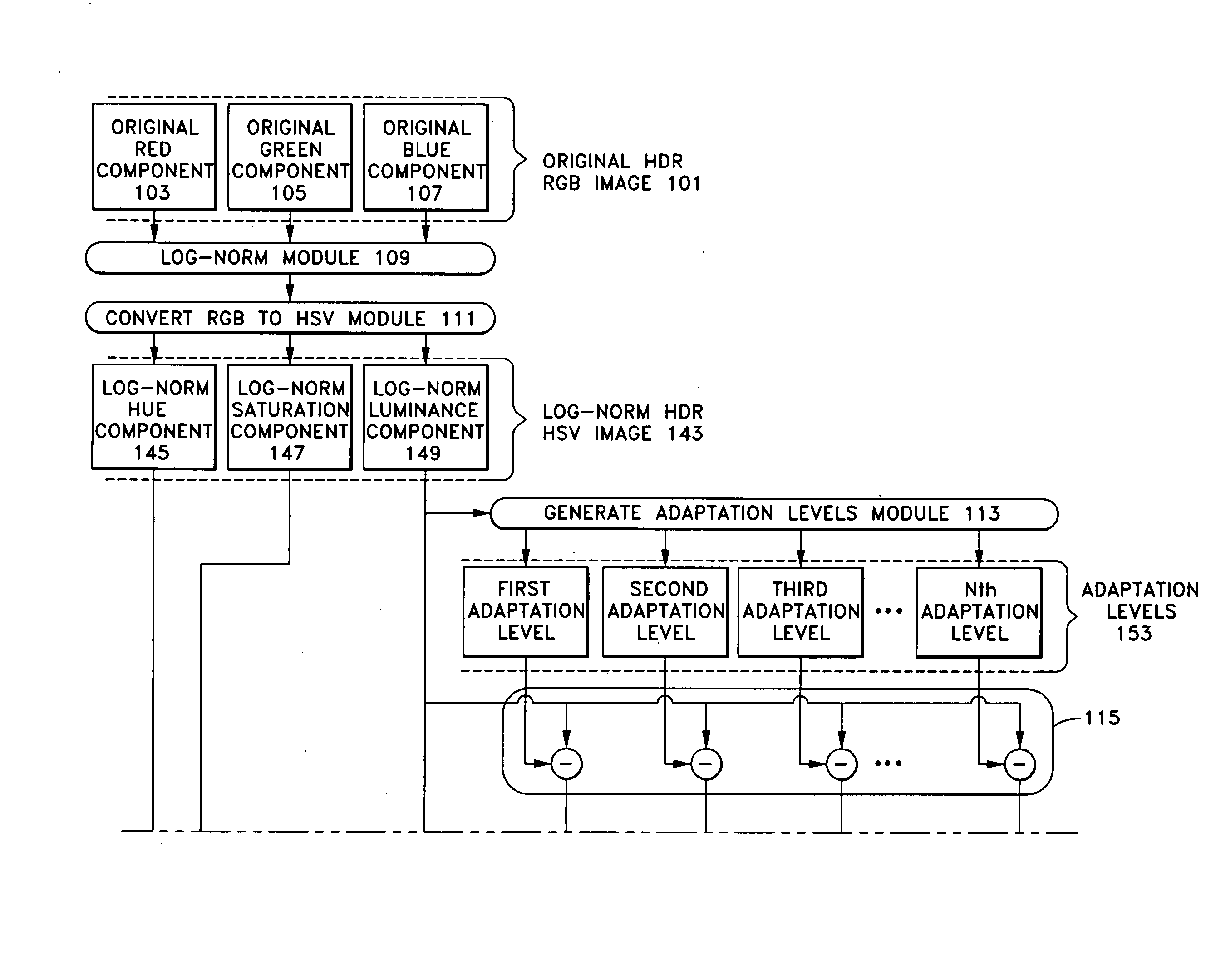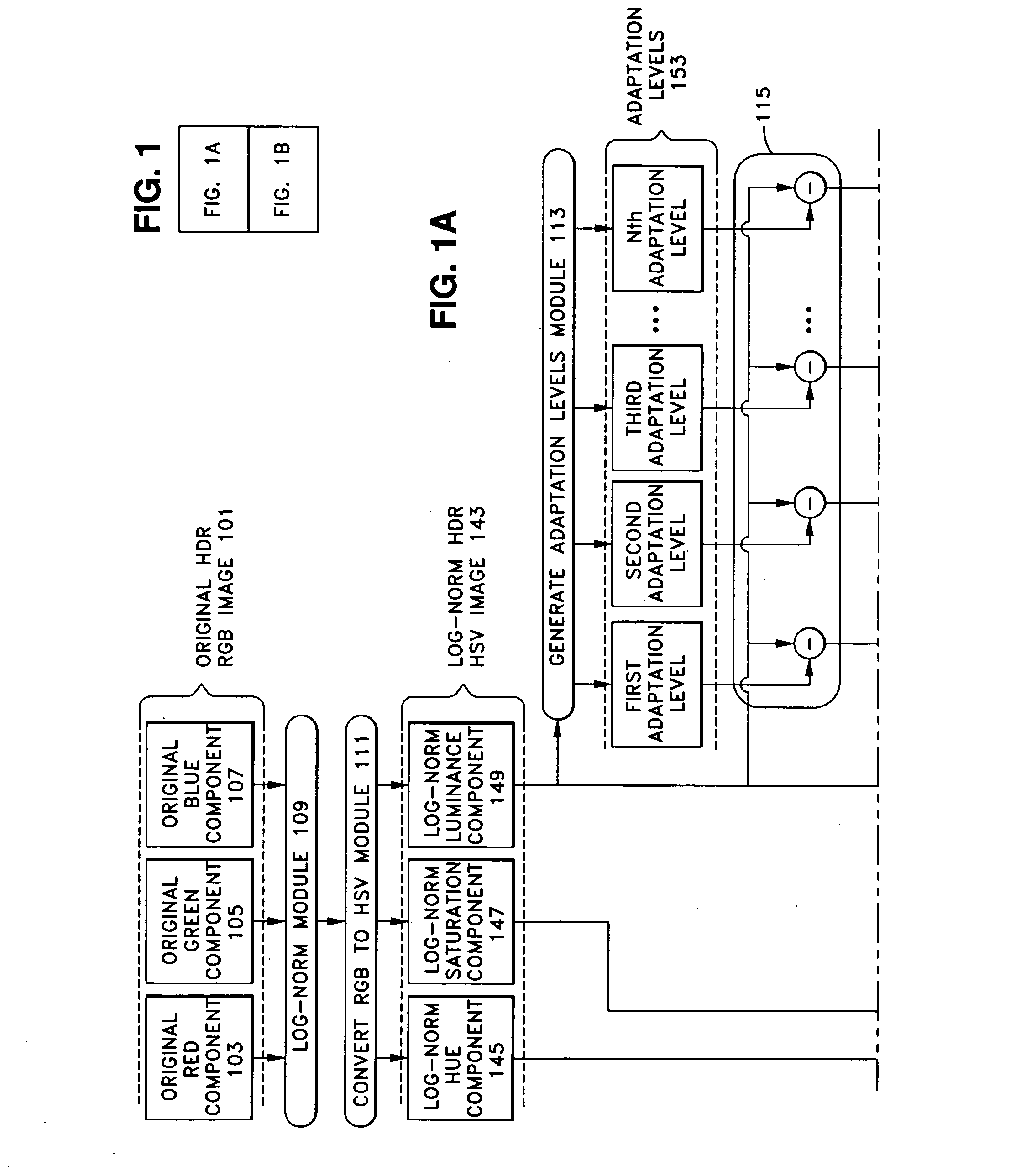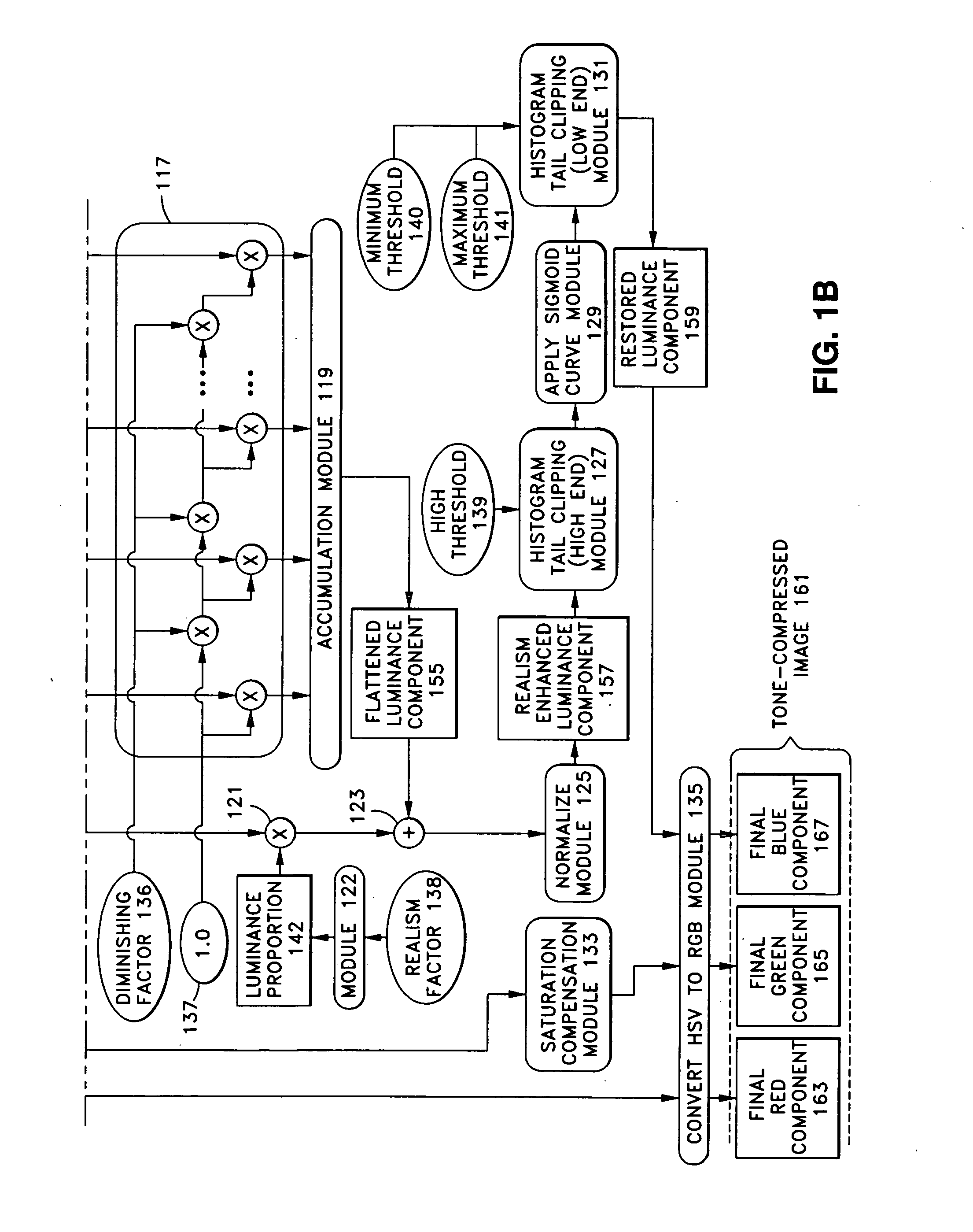Tone mapping of high dynamic range images
a high dynamic range, image technology, applied in image enhancement, image analysis, instruments, etc., can solve the problems of image haziness, image ringing artifacts, and high processing speed, and achieve the effects of reducing ringing artifacts, enhancing visual cues, and reducing haziness and loss of contras
- Summary
- Abstract
- Description
- Claims
- Application Information
AI Technical Summary
Benefits of technology
Problems solved by technology
Method used
Image
Examples
Embodiment Construction
[0033] Embodiments of the present invention are described below with reference to the accompanying drawings. The embodiments describe tone compression by multi-scale homomorphic filtering using incrementally-spaced adaptation levels weighted by a diminishing factor and applying restored visual cues. In general, homomorphic filtering is used to reduce the effect of illumination variations in a scene while emphasizing the reflectance components.
[0034]FIG. 1 depicts a procedural and data flow diagram of one embodiment of an HDR tone-mapper according to the present invention, in which an original HDR RGB image 101 in RGB (red, blue, green) format is tone-mapped to produce a tone compressed image 161 in RGB format. FIG. 1 shows the RGB components of original HDR RGB image 101, which are an original red component 103, an original green component 105, and an original blue component 107. Original HDR RGB image 101 is input and processed by processing modules, shown as rounded boxes and cir...
PUM
 Login to View More
Login to View More Abstract
Description
Claims
Application Information
 Login to View More
Login to View More - R&D
- Intellectual Property
- Life Sciences
- Materials
- Tech Scout
- Unparalleled Data Quality
- Higher Quality Content
- 60% Fewer Hallucinations
Browse by: Latest US Patents, China's latest patents, Technical Efficacy Thesaurus, Application Domain, Technology Topic, Popular Technical Reports.
© 2025 PatSnap. All rights reserved.Legal|Privacy policy|Modern Slavery Act Transparency Statement|Sitemap|About US| Contact US: help@patsnap.com



